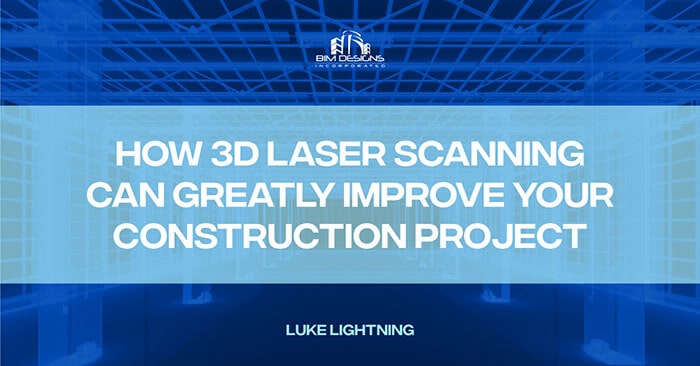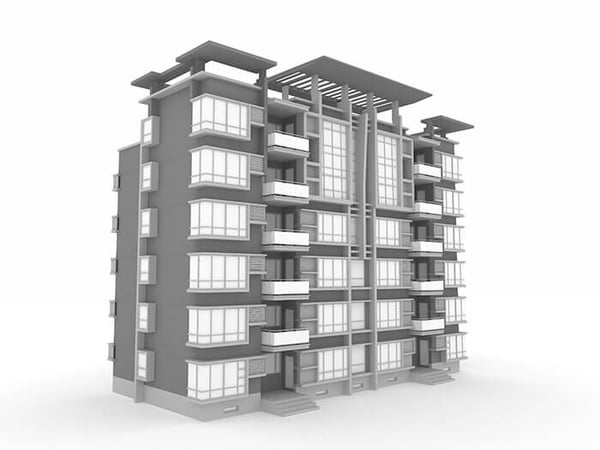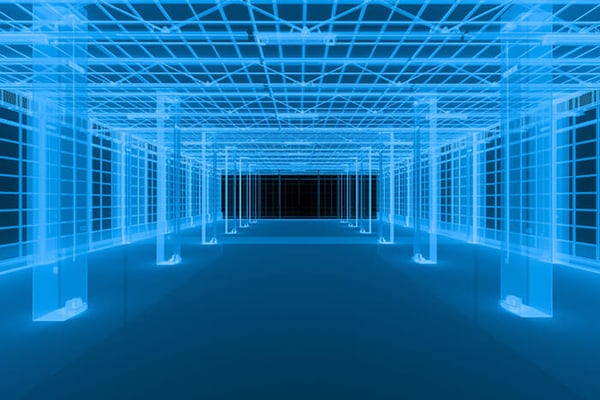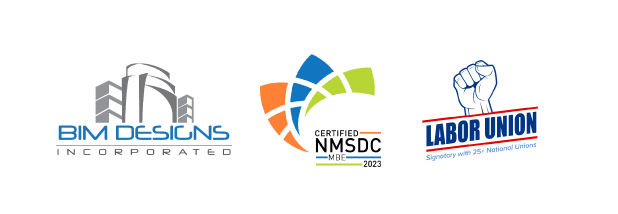
Although it seems like something out of a sci-fi film, 3D laser scanning is far from fiction—just science. During a 3D laser scan, a line of laser light captures the shape of a physical object. The data collected from the movement of the laser is used to construct a “cloud” of points that, when connected, form a 3-dimensional digital image.
Thanks to the accuracy of a 3D laser scan, it’s an ideal solution for capturing not just the general shape of an object or area, but the exact size and volume of rooms, common areas, and other elements of a building.

How 3D Laser Scanning Works
While a laser probe moves over the surface of an area, two sensor cameras record the length of the laser beam. For example, when the beam passes over an area closer to the probe, it gets shorter, and the cameras record this distance. Because there are two cameras in addition to the laser beam, the resulting axis has three dimensions, expressed as “XYZ.” Each of the data points has a length (X), height (Y), and depth (Z).
The “point cloud” of data is then rendered. The length, height, and depth figures are used to plot each point, and the millions of points, when combined, form a 3-dimensional image.
How Does 3D Laser Scanning Work With BIM?
Thanks to its accuracy and amount of detail, 3D laser scanning is an ideal partner for the BIM process. Laser scanning is a valuable tool for documenting the present shape, size, and position of current building elements. The information gathered from a 3D laser scan can also help a team decide how to perform modifications or future additions to a structure.
Design Phase
Accurate information regarding the dimensions of a building area can help form a crucial foundation from which the rest of the project can progress. A 3D laser scan can thus give a design team an accurate starting point from which to begin envisioning either new construction or the expansion of an existing building.
When a three-dimensional image is taken of the target area, both the image and the dimensional data can help many facets of the decision process. For example, if an area of a building is supposed to house several new offices, 3D laser scanning can accurately model the size and positions of each office. Further, components that are pivotal to the design, such as building systems and appliances, can be accurately placed—to the millimeter. With this information, the owner or general contractor can design and configure an area exactly the way it's needed.
Building Modification
Perhaps nothing is more important to a successful renovation than an accurate starting point. With 3D laser scanning, the existing dimensions of a space are ascertained and then inputted for seamless integration in a BIM system. In addition to the data, once the image is rendered and incorporated into the overall BIM design, it can become a tangible part of an augmented reality presentation. This can help give clients, designers, architects, workers, and other stakeholders a more accurate representation of how the renovated, finished product will look.

Who Benefits from 3D Laser Scanning
While the list of beneficiaries of this technology is virtually endless, the following professionals may see the most immediate benefit from 3D laser scanning tech:
- Architects
- Contractors
- Designers
- Estimators
- Developers
- Facility owners
- Mechanical engineers
- Project managers
- Structural engineers
- Sub-contractors
- Plumbing engineers
- Electrical engineers
How BIM Designs, Inc. Implements 3D Laser Scanning
Several types of projects have benefitted greatly from 3D laser scanning technology. The ability to generate ultra-accurate imagery and dimensional data makes the design and implementation process both easier and more effective. BIM Designs, Inc. has been able to leverage 3D laser scanning to produce structures that are more comprehensive in their utility and, more importantly, safety. The safety of a design that incorporates this technology applies to both the well-being of inhabitants and adherence to specific building codes and regulations.
Since the 3D model produced is both accurate and realistic, those who will reside or work in the building are able to get an idea—far before construction is completed—as
to what the structure will feel like. In addition, the time saved with 3D laser scanning technology make for a more efficient work environment. With more accurate dimensions in-hand, BIM is also able to conserve materials—reducing waste and
saving money.
Contact BIM Designs, Inc. today to discuss how 3D laser scans can benefit your upcoming projects.
About BIM Designs, Inc.
BIM Designs, Inc. is an agile BIM design, modeling, consulting, and coordination service provider for architecture, engineering, and construction (AEC) contractors and developers that desire experienced journeymen detailers and engineers for Mechanical, Electrical, Plumbing and Fire Protection (MEPF) modeling, Laser Scanning, and Virtual Design Construction (VDC) projects.
If you need 3D BIM modeling, design, and MEP detailing services, BIM Designs, Inc. (BDI) has the expert tradesmen who know how to precisely design and model your systems. Contact us today for a free estimate or to discuss your project needs.

About the Author
Luke joined the BIM Designs team in June 2020 as the Head of Business Development and helps oversee the business development and marketing team's objectives. With over 8 years of business development and sales experience working with startups, accelerators, investors and global enterprise-level companies, he has successfully helped startups scale their sales operations. Previously, he worked in the biotech industry as a research leader for over 9 years resulting in an IPO in 2011.





